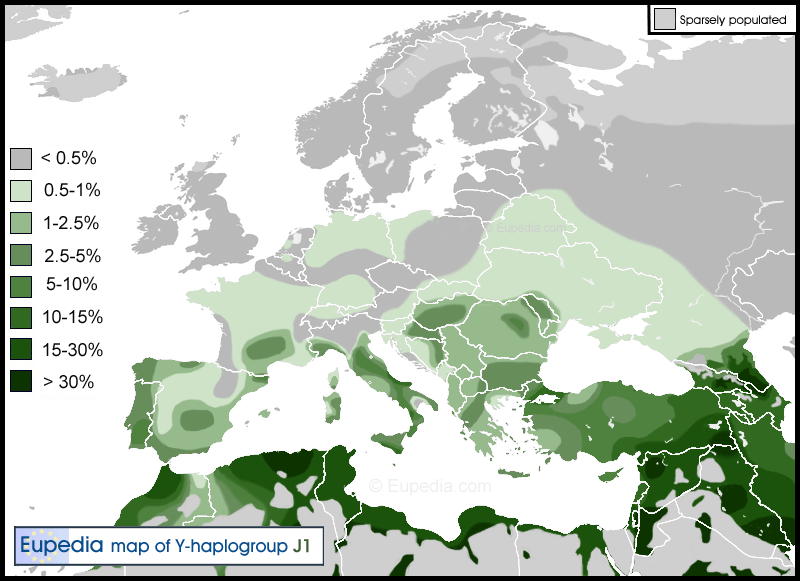Angela
Elite member
- Messages
- 21,823
- Reaction score
- 12,329
- Points
- 113
- Ethnic group
- Italian
See:
http://khartoumspace.uofk.edu/handle/123456789/19964
The results cover all nine ethno-linguistic groups.
As to the Ydna:
A: 24.73
B: 7.52
E: 46.24
J: 25.31
Not really surprising.
They say in the abstract (which for some reason I can't reproduce) it's largely A-M13, E-V32, J-58. Gee, our late Italian J1s could claim direct ancestry from Eritreans now.
Different groups had different frequencies.
I wish the tables by specific ethnic group and language were available, and more detailed sub-group information, but you have to request a copy of the pdf.
http://khartoumspace.uofk.edu/handle/123456789/19964
The results cover all nine ethno-linguistic groups.
As to the Ydna:
A: 24.73
B: 7.52
E: 46.24
J: 25.31
Not really surprising.
They say in the abstract (which for some reason I can't reproduce) it's largely A-M13, E-V32, J-58. Gee, our late Italian J1s could claim direct ancestry from Eritreans now.
Different groups had different frequencies.
I wish the tables by specific ethnic group and language were available, and more detailed sub-group information, but you have to request a copy of the pdf.
| Gebremeskel, Eyoab Iyasu | |
| Abstract: | Background: Eritrea is strategically located at the eastern part of the African Sahel belt over what is believed to be the original scene of modern humans’ evolution and dispersal. The country’s peculiarity is also reflected in the presence of nine ethno-linguistic populations that speak Cushitic, Semitic and Eastern Sudanic languages, makes it all interesting in addressing some of the significant questions pertaining to history of human expansion within and beyond the African landscape. Materials and Methods: To examine the population structure of the Eritrean populations and to infer on their prehistoric genetic place in East Africa, extant Eritrean populations were studied using the MT-CO2 gene, Y chromosome biallelic SNPs and Y-STR markers. The populations included in the study represent nine ethno-linguistic groups and other populations for comparison. Results: This work generated 81 MT-CO2 sequences, 14 Y chromosome haplogroups (using bi-allelic variation) and 86 unique haplotypes from 17-loci Y-STR analysis. Data from these three marker systems in this study and from other regional and worldwide populations were analyzed by using different analytical methods to assess the ancestry and the genetic affinities of the Eritrean populations with each other and other regional populations. Major Y chromosome haplogroups A (24.73%), B (7.52%), E (46.24%) and J (21.51%) were detected in all Eritrean samples. Further high-resolution analysis of the macrohaplogroups resulted in high frequency of A-M13, E-V32 and J-P58 with different proportions found in the populations analyzed to indicate the prehistoric and historic demography of the populations. The x Eritrean MT-CO2 sequence analysis generated 21 mutations (including two novel mutations) and 9 unique haplotypes. In general, an overall genetic admixture was inferred solely on the absence of genetic variation along linguistic affiliation and geographical location of extant Eritrean population. This genetic information in tandem with evidence from archaeology and linguistics appears as a promising way forward to answer some of the tantalizing questions in human histories, like the origin and dispersal of the E haplogroups and their implication to the founding of some major African cultural traits including languages. Conclusion: This thesis altogether presented the first glimpse into the demographic history of the existing genetic landscape of the Eritrean populations and also reflected on the spectacular level of sequence variation and presence of ancestral haplogroups within East Africans in comparison to other African and global samples. Both phylogenetic and network analyses placed East African at the root of the human evolutionary tree and as major contributors to the out-of-Africa event. The implication of the current data to genomics, forensics, and health research, as well as the need to carry out defined studies of human genetic variation that includes more representative African populations particularly East Africans is paramount |
Last edited:





